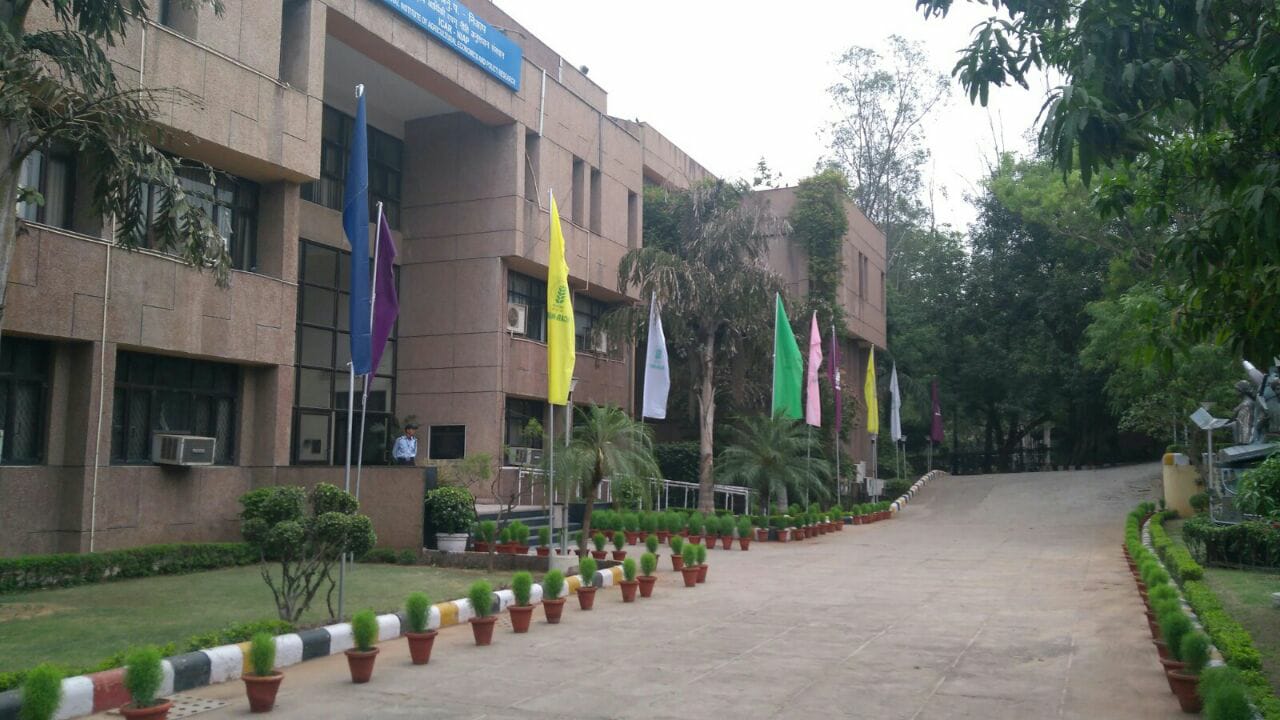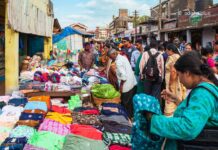Pradeep Kumar Panda
While handling the COVID-19 crisis, will India make use of the opportunity to address the long-standing challenges of health and nutrition of low-income households, particularly of women and children, which are central to the three prongs of the health sector, food sector, and the macroeconomy? From the macroeconomic perspective, the International Monetary Fund (IMF) has estimated a global gross domestic product (GDP) loss of $9 trillion. A small fraction of that invested in pandemic preparedness would have had a large pay-off.

Better supply and demand management of food would: (i) avoid the immediate food crisis for millions posed by logistical issues between the farm and the plate; (ii) contribute to effective demand by reducing long-term, structural bottlenecks inhibiting supply reaching vulnerable consumers; (iii) contribute to the global sustainable development goals (SDGs) that are important since India presently contributes about one-third of the global under-nutrition burden; and (iv) prepare India to avert future disasters while resuming broader based economic growth.
India extended its lockdown beyond 3 May 2020 by two weeks, to contain the spread of COVID-19, buying time to protect its 1.3 billion people from the virus’s uncertain trajectory. Despite enormous hardships, the lockdown appears to have strong public support. Globally, the reliability of this strategy in bending the curve or reducing future waves of COVID-19 is, by no means, certain. Policy responses are challenging, although global knowledge is accumulating rapidly.

With sudden job losses, the lockdown created acute hardships for millions of urban and rural households, most working in the informal sector with no contracts, including 22 million migrants, likely moving from high-income metropolitan locations with higher case rates to areas of migrant origin in poorer states, such as Bihar and Uttar Pradesh, contributing to spread of the virus. How much can India’s formal and informal social safety nets be strengthened to deal with the challenge?
The diagnosis and solutions are well-known in India—already working in several cases—but overcoming weak implementation and monitoring, including in the Prime Minister’s extensive agricultural policy reforms announced on 2 May 2020 and the finance minister’s steps announced on 14 May 2020, which will be essential. Implementation remains a challenge, where poverty and undernourishment are acute.
The importance of testing, tracing, isolating, and treating those infected with COVID-19 to reduce its spread has huge implications for India. It means India should substantially increase investment in public health, including sanitation and epidemiological research. Concurrently, India should adopt and vigorously implement a “zero hunger” goal. An estimated 194 million were hungry, lacking purchasing power, before COVID-19. The pandemic is projected to increase poverty and hunger by several million. Social safety nets, in-kind and cash transfers, should be increased substantially to create effective demand for food among them. Furthermore, policymakers should prioritise worker safety to assure labour’s return to broad-based, efficient, and productive growth.

Fortunately, India’s food production has done well in recent years, with large public sector food stocks of 57 million tonnes, which allows for food distribution. Strengthened public distribution was already needed, because economic growth had reduced poverty much too slowly and employment growth had slowed even before the pandemic. India’s largely privately traded horticulture production has also grown more rapidly than food production (313.85 million tonnes on 25.49 million hectares in 2018–19), outperforming staple grain production (284.95 million tonnes for the same year).
India now ranks second globally, behind only China, in fruit and vegetable production. Per capita availability of milk in India was 394 grams per day in 2018–19, an increase of 40% since 2009–10, but availability varies substantially across states. Smallholder dairy is reportedly adjusting well, switching from the private sector to the cooperative sector in sales and milk processing.
In short, diets have improved, but India still contributes a third of the global burden of hunger and malnutrition. Also, India has a growing incidence of non-communicable diseases (particularly, diabetes and cancers), increasing the population’s vulnerability to COVID-19, and it has the largest number of the world’s children, 4.3 million, under 18 years.
Persisting undernourishment: Together, women and children comprise about 70% of India’s population. Incidence of undernourishment is higher in women than men (average body mass index ≤ 18.5), varying considerably across states and wealth quintiles, although men fare only slightly better. The prevalence of undernourishment amongst women is as high as 31.6% in Jharkhand, and low as 6.4% in Sikkim. Undernourishment is high in Bihar, Madhya Pradesh, Gujarat, and Rajasthan, which are also the states with high incidence of stunted children. In the lowest health quintile, 36% of women are undernourished, compared to 11.6% in the highest wealth quintile; while among men, these shares are at 32% and 10.6%, respectively.

While under-five stunting, at 37.9%, compares to the developing country average of 25%, nearly 21% of children under five show wasting, which is more than twice the developing country average of 8.9%; and 51.4% of women in reproductive age have anaemia. Again, interstate differences in each dimension are considerable. Of the 100 poorly performing districts in stunting, Uttar Pradesh, Bihar, Madhya Pradesh, Jharkhand, Gujarat, Karnataka, and Rajasthan account for 78% of stunting.
High levels of maternal and child undernutrition in India persist, despite strong constitutional and legislative policy commitments. The National Food Security Act, 2013, mandates food and nutrition entitlements for children, pregnant women and breastfeeding mothers with maternity support; and the Infant Milk Substitutes, Feeding Bottles and Infant Foods (Regulation of Production, Supply and Distribution) Act, 1992, and the amendment act, 2003, provide a strong policy framework for protecting, supporting, and promoting nutrition interventions—especially during periods of greatest vulnerability for children and women.
The National Nutrition Policy, 1993, complemented by other policies, such as the National Health Policy, 2002 and the National Policy for Children, 2013, provides a strong foundation for addressing immediate and underlying determinants of undernutrition through both direct and indirect interventions. The Twelfth Five Year Plan reinforced the commitment to prevent and reduce child undernutrition (underweight prevalence in children 0–3 years), as one of its core monitorable targets, binding multiple sectors and states to collective action.
Migrant labour and employment: Temporary and seasonal migration for employment was about 13.6 million annually, seven times larger than permanent and semi-permanent migration. Temporary and seasonal migrants belong mainly to poor and lower socio-economic categories, in contrast to permanent/semi-permanent migrants. A large number of migrants return to their places of origin, as part of circular migration, so contribution of migration to urbanisation and population redistribution remains much lower than expected, based on the historical experience of mobility transition in Western countries.
But, now, return migration poses risks of the spread of the virus. On the other hand, high population densities make social distancing nearly impossible, even in rural areas, especially in poorest states, like Bihar and (eastern) Uttar Pradesh. A reported 70.7% of the population is rural, according to the labour survey. The development impact of migration has been positive, but without policy support, and as elsewhere in the world, general perceptions about migration are negative and hostile. Poorest households are more widespread, and many are women-headed and lack assets.
The pandemic has had an enormous impact on employment, beyond that seen on migrant labour. The Centre for Monitoring Indian Economy (CMIE 2020) reports that, as in other countries, unemployment rates have skyrocketed, increasing nearly 2.5 times over one month to stand at between 23% and 26% in May 2020. The workforce is comprised of 51.7% of rural males but only 17.5% of rural females, and 53% of urban males but only 14.2% of urban females. The working population ratio (WPR) in current weekly status (CWS) was 49.6% for rural males, 14.8% for rural females, 51.7% for urban males, and 13.3% for urban females. Women’s wages are two-thirds to three-quarters of male wages.

To improve the undernutrition challenge for better health, a multi-level, multi-stakeholder market and safety net strategy is needed.
Strengthening food supply chains: The need of the hour is to help strengthen food supply chains that move nearly a billion tonnes of food, horticulture, livestock, fisheries production to consumption, removing constraints to production, storage, distribution, processing, packaging, retailing, and marketing, and making the most of institutional diversity in supply chains and information technology.
To this end, the National Institute of Agricultural Economics and Research Policy (NIAP) has already identified areas where quick wins in policy implementation will help foster market linkages, for example, not restricting the farmers to the Agricultural Produce Market Committee (AMPC) markets, public information on all public and private storage facilities for surpluses, easy access of market actors to agricultural finance and information to traders linking them to farmers, cash transfers to households using direct banking transfers, creating awareness and, hence, demand for pulses, milk, fruit and vegetables, and the wider use of the public distribution system (PDS) to distribute grain stocks.
Moreover, as the finance minister noted in her speech on 14 May 2020, agriculture, as a state subject, has had its own challenges in a large country like India. Despite the fact that several state-level statutes of the APMC Act have been reformed, so far, they have been unable to create an integrated national agricultural market or address key issues, such as the expansion and modernisation of marketing facilities, improvement in marketing information and communication, and linking of small producers with efficient marketing channels. The Prime Minister’s announced reforms will need to be backed by sustained investments in market infrastructure, both by the public and private sectors.
Empowering women in food chains: Women’s empowerment and its effectiveness in their ability to implement decisions needs to increase, especially in the food production and consumption domain, where they play a large role. For example, nearly 85% to 90% of menial labour in the dairy sector is done by women.

India’s institutional diversity in value chains consisting of cooperatives, producer organisations, private sector and self-help groups (SHGs), combined with the PDS, can be gendered to be an asset in the COVID-19 emergency. For example, countries like the United States have seen milk and vegetables ploughed into rivers and the ground. In contrast, in India, the National Dairy Development Board reports liquid milk sales showing signs of steady recovery, based on policy and proactive support from the central and state governments and on measures taken by producer-centric organisations to address supply chain challenges, whereas private sector sales have shown greater disruption.
Women empowerment will also enable significant changes in consumer behaviour, including how food is allocated within the household. In times of scarcity, in patriarchal societies, women and children often go hungry and become food-insecure. Prolonged periods of food insecurity translate into long-lasting nutritional deficiencies and poor health. Through several initiatives, this collective change in the consumer behaviour can foster sustainable food systems that, at the same time, enhance nutrition security for all.
Information technology (IT) is already profoundly impacting India’s ability to respond to the COVID-19 pandemic. IT is particularly important for real-time contact tracing and monitoring of the emergence of hotspots and can play an even more significant role in managing relief measures. As COVID-19 hotspots appear and abate, relief measures can correspondingly be ramped up or dialled down, as necessary. IT will remain vital in targeting health and financial aid.

Even in normal times, medical expenditures push people into debt and poverty. Over 80% of Indians have no access to health coverage. Despite a health infrastructure that reaches out to primary and community health centres in rural areas, reliance on private health providers is common. Inadequate staffing, accountability, and quality are some of the reasons why private hospitals are preferred. Inpatient expenditures (outside of childbirth) in private hospitals are six to eight times more than in public hospitals. To improve healthcare in the post-COVID-19 environment, more public–private partnerships are needed. Kerala is one state with substantial public investment in the healthcare industry, in addition to crowding-in private health investment.
It is time for significant change. India is responding to the challenge in several ways; but in the post-COVID-19 normal, by adopting “zero hunger” as an explicit goal, prospects could be a lot better. Comfortable foodgrain stocks and a favourable demographic structure have aided India’s ability to cope with the crisis, but other challenges are daunting. They include high undernutrition prevalence, growing incidence of non-communicable diseases, high population densities, vulnerable migrant labour and daily wage earners, low status of women, low participation rates and lower wages of women in the labour force, and poor health infrastructure.
Most immediately, India needs to prepare an exit strategy from the lockdown. While economic activity should be resumed and supply chains restored and improved, special attention should be paid to protecting income, livelihoods, and food security amongst the vulnerable groups. Removing supply bottlenecks and providing demand stimulus (via incomes) could work in tandem with restoring the economy.

Understanding the pattern of spread of the infection, identifying virus-free districts, and developing cost-effective testing will lessen the risk of exposure on lifting the lockdown. It will be important to encourage employers to practise socially responsible protocols for worker safety: providing workers with masks, soaps, sanitisers, and clean water, as well as facilitating social distancing. The stigma against COVID-19 needs to be channelled into a constructive way forward. Awareness that most infected people could be cured, if treated in time, would reduce the stigma.
The COVID-19 outbreak has made India realise the fragility of its public health infrastructure. India needs to increase and strengthen investments in public hospitals, vaccines, and pharmaceuticals. India has also realised the critical role of epidemiological studies in understanding the spread of the disease. Policymakers should take this opportunity to strengthen its healthcare and food and nutrition research capacity.
When social distancing is so important, policies should also explore the potential of IT for activities ranging from distant learning, implementation of government schemes in efficient, transparent, and accountable manners, to the securing of the social safety nets.
(Author is an economist based at New Delhi)



























